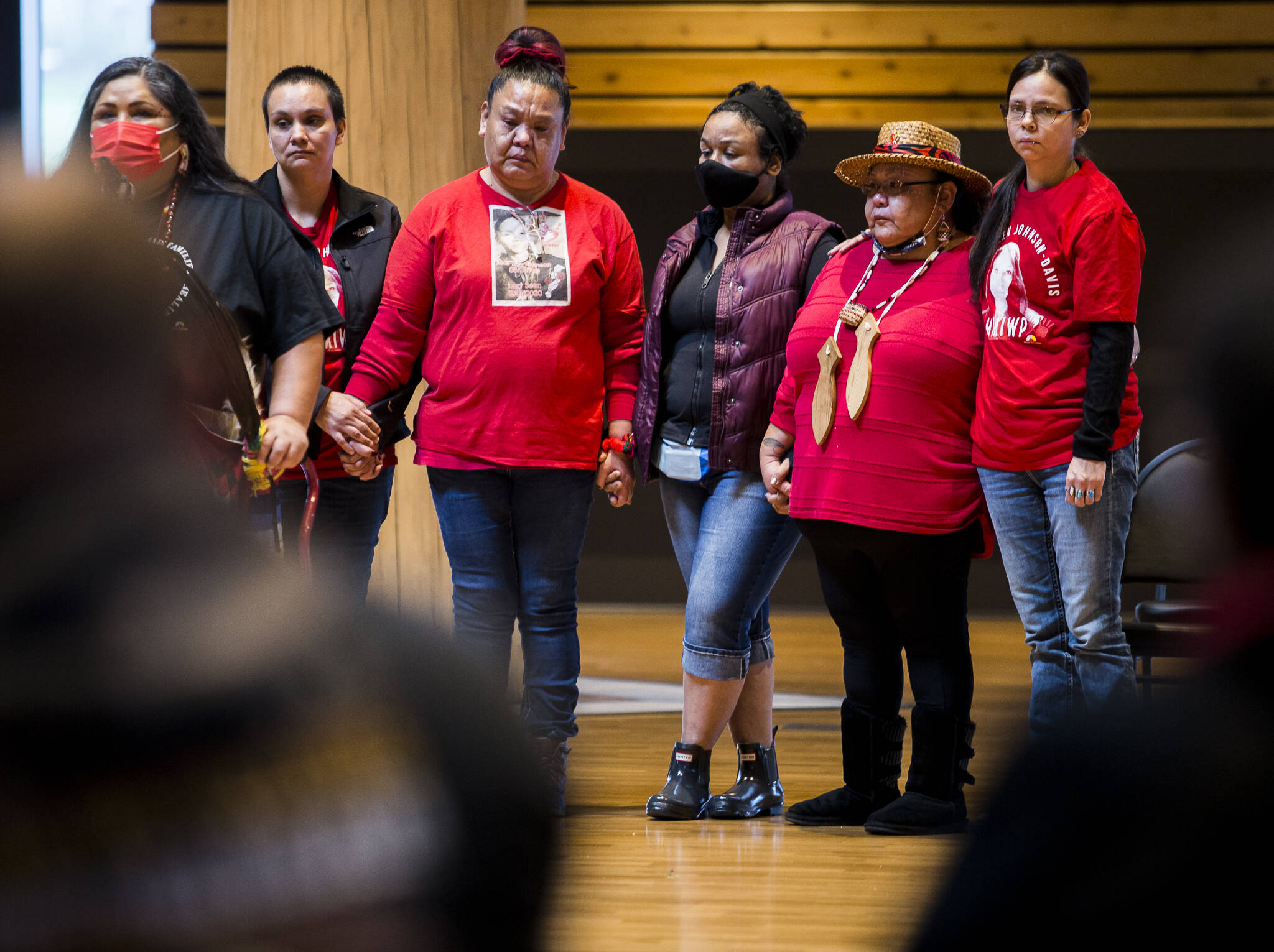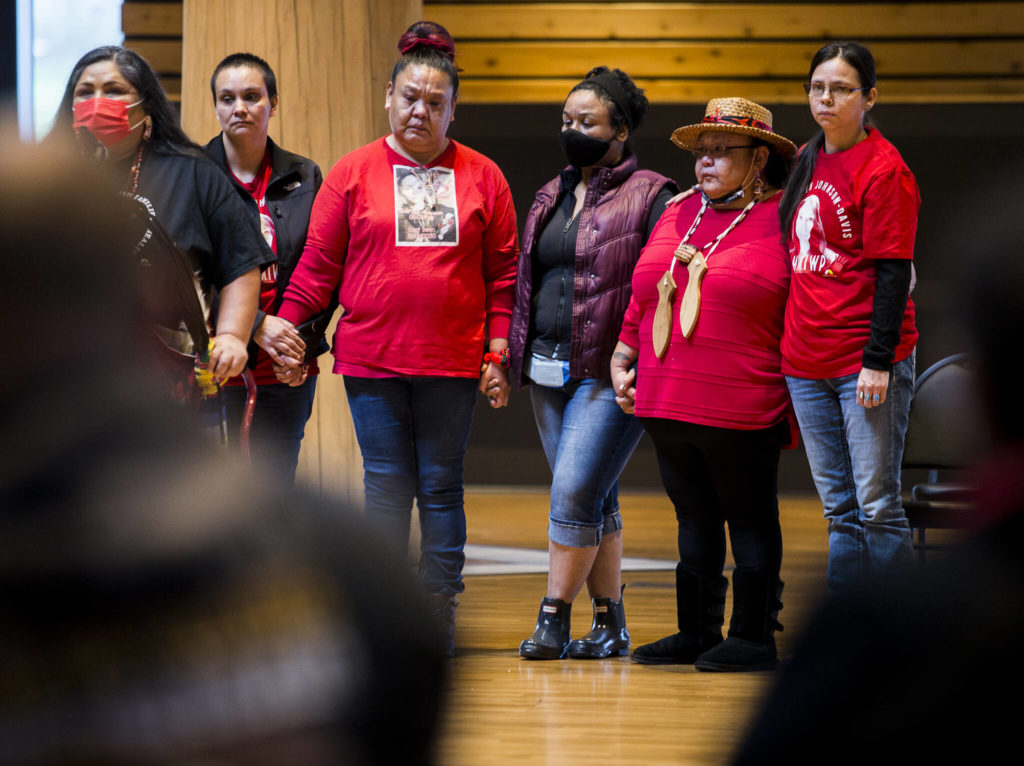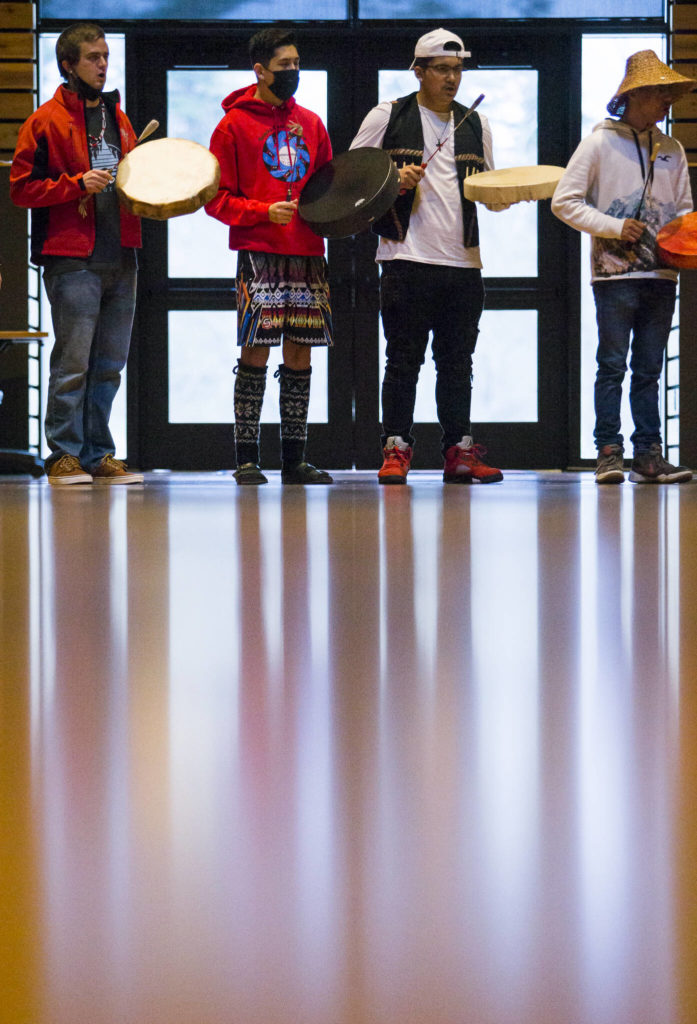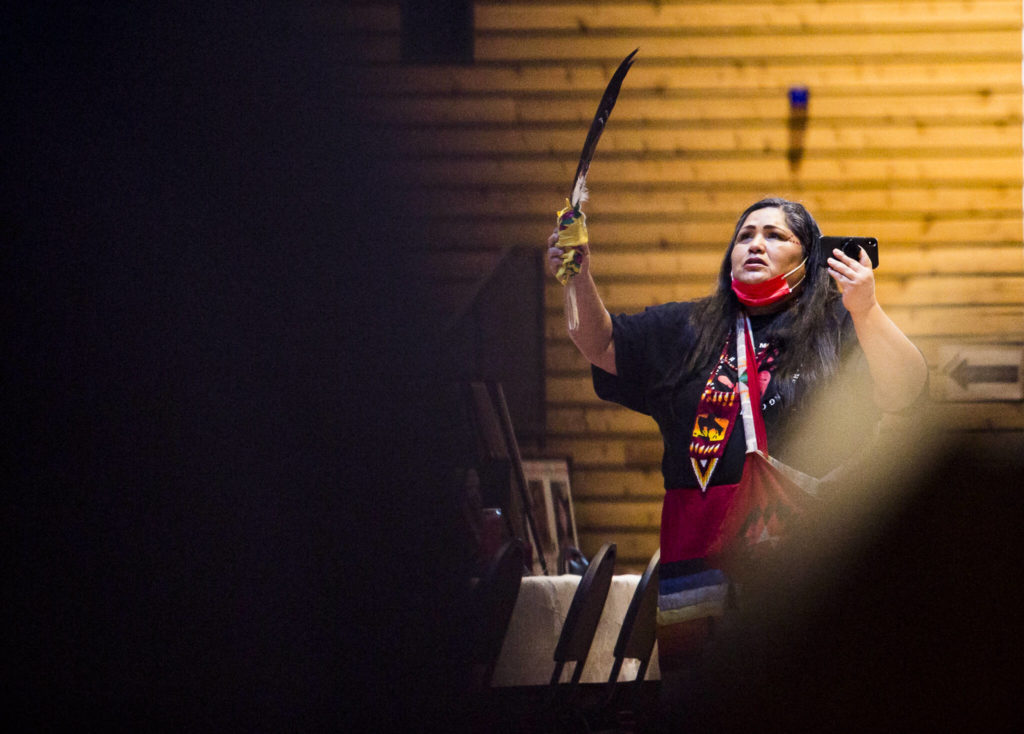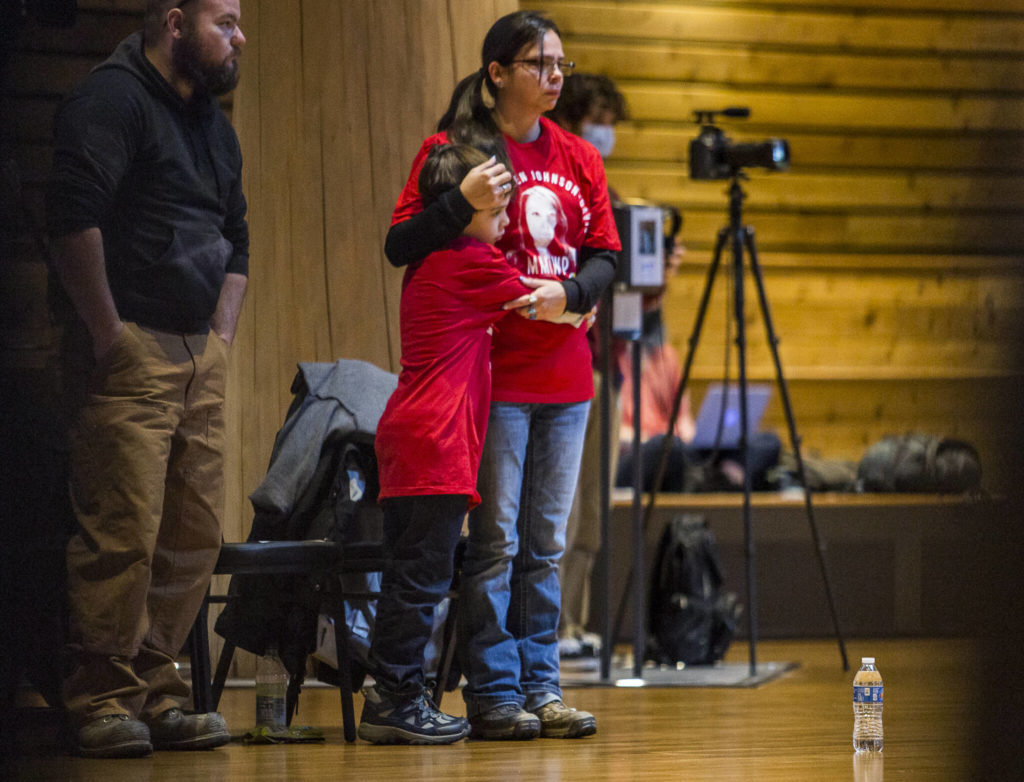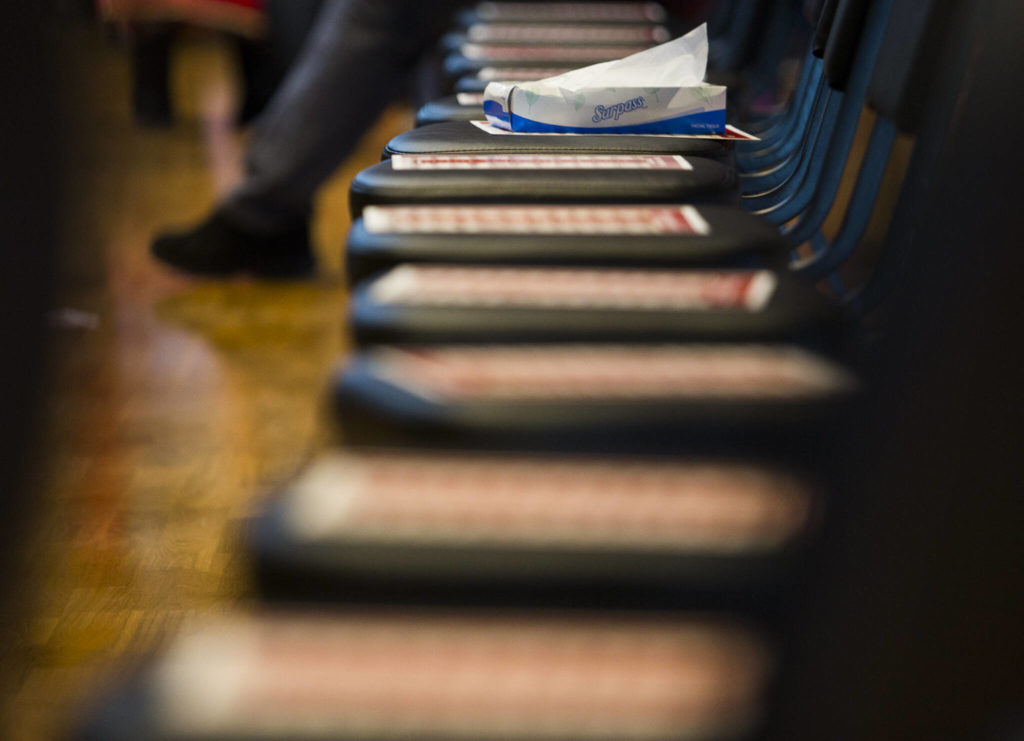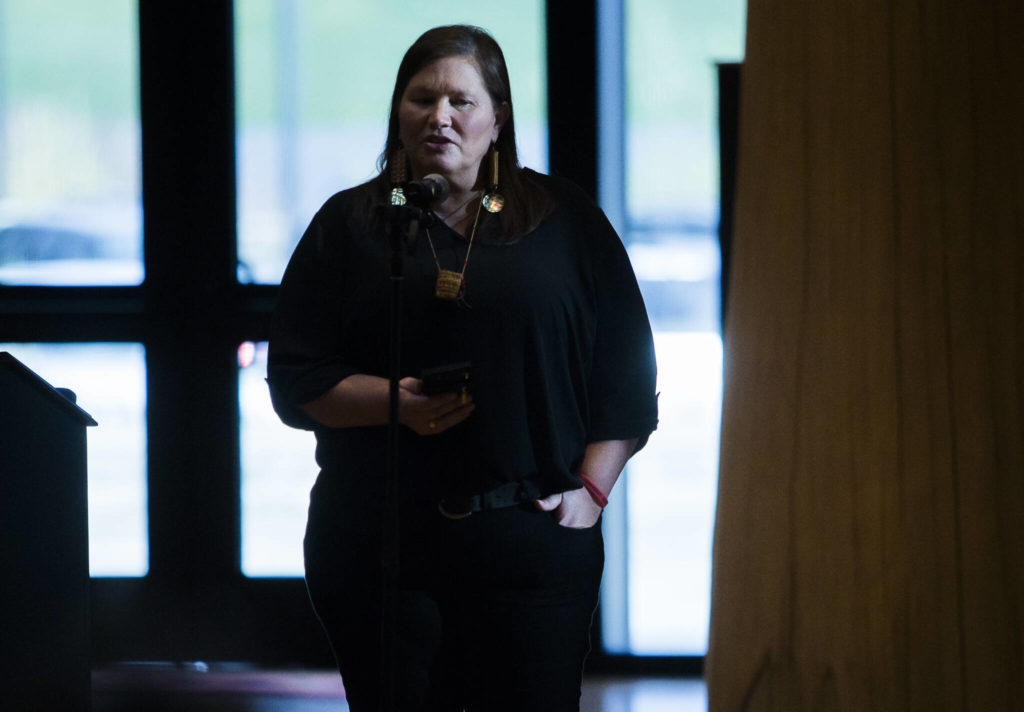TULALIP — For over a year, Mary Ellen Johnson-Davis has been missing.
“I love and miss you, sister come home,” echoed through the walls of the Tulalip Gathering Hall on Thursday as singers and drummers opened a gathering in honor of Johnson-Davis and dozens of Indigenous people missing across the state.
“That is probably the most important part of this, when we’re preparing for this spiritual work,” said Roxanne White, founder of a statewide group known as Missing and Murdered Indigenous People & Families. “We need those powerful prayers, those drums.”
Many at the gathering were family members and friends of Johnson-Davis. Her sisters, Gerry Davis and Nona Blouin, said the grassroots MMIP advocate and survivor has been instrumental in the search.
White connected them with legal help and spent many days spreading the word about the missing Tulalip tribal member.
Blouin and Davis want people to know their sister is more than a face on a poster.
Johnson-Davis is a talented artist. Facebook photo albums share a few of her creative projects: an eagle painted on a deerskin drum, a sketch of a wolf and carved cedar paddles. She adores Will Ferrell and has been known to do a mean Ricky Bobby impression when her family members are feeling down.
She loves cats. She taught “Little Man,” a fat tabby cat, to walk on a leash, Davis said.
She has always been the life of the party during family trips. She loves driving ATVs along the sand dunes and playing with her nieces and nephews in the river.
“I just can’t believe this is happening,” said Johnson-Davis’ first cousin, Lynette Jimicum. “Sometimes it just feels like it’s a nightmare. Like I’m going to wake up and she’s going to be found, or just wake up and nothing ever happened.”
Tulalip Tribes Vice Chairman Glen Gobin likened it to the feeling of losing a child in a store, with no end.
Johnson-Davis, then 39, went missing Nov. 25, 2020. A friend was supposed to pick her up and drive her to stay with a family near Oso. Her last text, around 2 p.m. that day, alerted him she was “almost to the church” on 140th Street NW, also known as Fire Trail Road. But he didn’t hear from her again. Her cellphone later connected to towers around north Snohomish County.
Davis and Blouin said they assumed Johnson-Davis’ husband would file a police report, but he didn’t until Dec. 9, two weeks after her disappearance. Davis said he left the state, and the two sisters have felt alone in their search for Johnson-Davis.
The day before she went missing, she got a ride to the Tulalip Tribal Court in hope of getting legal advice about filing for divorce, Davis said.
She spoke to a security guard in the lobby, but no attorneys were available.
Tulalip Police Chief Chris Sutter said the FBI and the U.S. Attorney’s Office have been working in partnership with tribal police in the search.
“We welcome the assistance of any local, state, or federal agencies who would be willing to partner with us,” he said, “to bring Mary home and justice for her case.”
In September, the FBI announced it would offer a $10,000 reward for information.
Later this fall, a Tulalip Tribes council member encouraged the tribes to commit at least $10,000 to the search, as well, and that number was later raised to $50,000, said Niki Cleary, spokesperson for the tribes.
Gobin said the federal government has historically failed to commit the time and resources to finding Indigenous people.
This summer, a highly publicized search for missing white 22-year-old Gabby Petito revealed the disparities in how such cases are handled in the United States.
There are currently over 100 active missing person cases involving Indigenous people in Washington, according to the latest Washington State Patrol list.
Indigenous women are 2½ times more likely to experience sexual assault, and they go missing and are murdered at rates higher than any other ethnic group in the United States, according to Gov. Jay Inslee’s proclamation establishing May 5 as Washington State Missing and Murdered Indigenous Women Day.
Washington had the second-highest number of cases of missing and murdered Indigenous women in the country, and of over 70 urban areas studied, Seattle had the highest number of murdered Indigenous women, while Tacoma had the highest number of missing person cases, according to a 2018 report by the Seattle Indian Health Board.
Last week, state Attorney General Bob Ferguson’s office convened a Missing and Murdered Indigenous Women and People Task Force for the first time. At the meeting in Yakama Nation, many MMIP advocates and survivors of human trafficking revisited traumatic memories and begged for resources.
“I was trafficked between Billings, Montana, and Spokane, Washington, for three months,” one woman said at the meeting. “So the reason why I’m bringing this up to the task force is because I want you to see a face … of an Indigenous sex trafficking victim in the state of Washington.”
Veronica Jimicum made the trip to share Johnson-Davis’ story.
“We miss our loved one,” Jimicum said, “and want her home safe and sound.”
Tips can be directed to the Tulalip police tip line dedicated to Johnson-Davis: 360-716-5918. The case number is #20-3063.
Isabella Breda: 425-339-3192; isabella.breda@heraldnet.com. Twitter: @BredaIsabella.
Talk to us
> Give us your news tips.
> Send us a letter to the editor.
> More Herald contact information.
